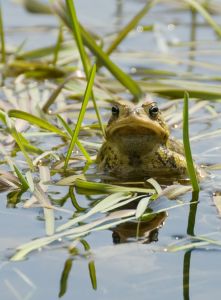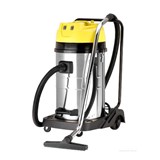Dr Mike Letnic, from the University of Western Sydney and colleagues, write in the international journal, Proceedings of the Royal Society B: Biological Sciences, that restricting cane toads' access to surface water could halt their spread deeper into the Australian outback.
Since their introduction to Australia in 1935, cane toads (Bufo marinus) have colonised millions of square kilometres. Concerted and costly efforts to control cane toads - particularly over the last three decades - have failed.
Dr Letnic says many biological invasions do not occur as a gradual expansion along a continuous front, but result from the expansion of satellite populations that become established at 'invasion hubs'.
Like a bushfire that spots ahead of the fire front, cane toads establish strongholds around permanent water sources, like dams. While this has helped toads spread far, it's also a weakness Dr Letnic believes can be exploited - literally stopping them dead in their tracks.
"The introduced cane toads require constant access to surface water and do not have the physiological adaptations of many native frogs which allow these species to survive the long dry season of Northern Australia," says Dr Letnic.
"However, since European settlement thousands of dams built across the semi arid outback to sustain valuable livestock are now also providing toads with a permanent water refuge to sit out the dry season which runs from April to November."
Dr Letnic, and colleagues from Melbourne University and The University of Sydney, found excluding toads from non-natural water sources, such as dams, with fencing or replacing open water storage with enclosed poly-tanks could reduce the area toads will colonise in Australia by nearly 1 million square kilometres.
"Blocking access to life-sustaining water could keep toads out of the ecologically fragile Pilbara and effectively reduce the final range of the cane toad in Australia by 38 percent," says Dr Letnic.
Dr Letnic says changing the way water is stored will be costly, but not incompatible with running cattle in the outback.
"Livestock will continue to drink from troughs - as they do now - but the water storage would no longer be accessible to toads. Our research also shows native animals will not be adversely affected by the changes. The trial fences did not prevent large native animals from accessing the dams and all animals indigenous to Northern Australia have evolved to survive the dry season without artificial water sources," he says.
"In some areas where water is scarce, but already colonised by toads, fencing dams or installing sealed water tanks could clear the area of all toads in just one dry season."
Unfortunately, it's probably too late to completely eradicate cane toads in Australia, especially in the wet tropics and warm eastern seaboard. But Dr Letnic believes his research demonstrates there is an opportunity to stop toads pushing into biologically diverse and relatively untouched semi arid regions.
"If left unchecked toads spreading into the semi arid outback, will reduce biodiversity as many key top order predators such as goannas and other reptiles are killed by eating the toxic toads. Not only will the environment suffer, but a crash in the numbers of goannas will destroy a vital source of healthy bush tucker for local Indigenous people."


